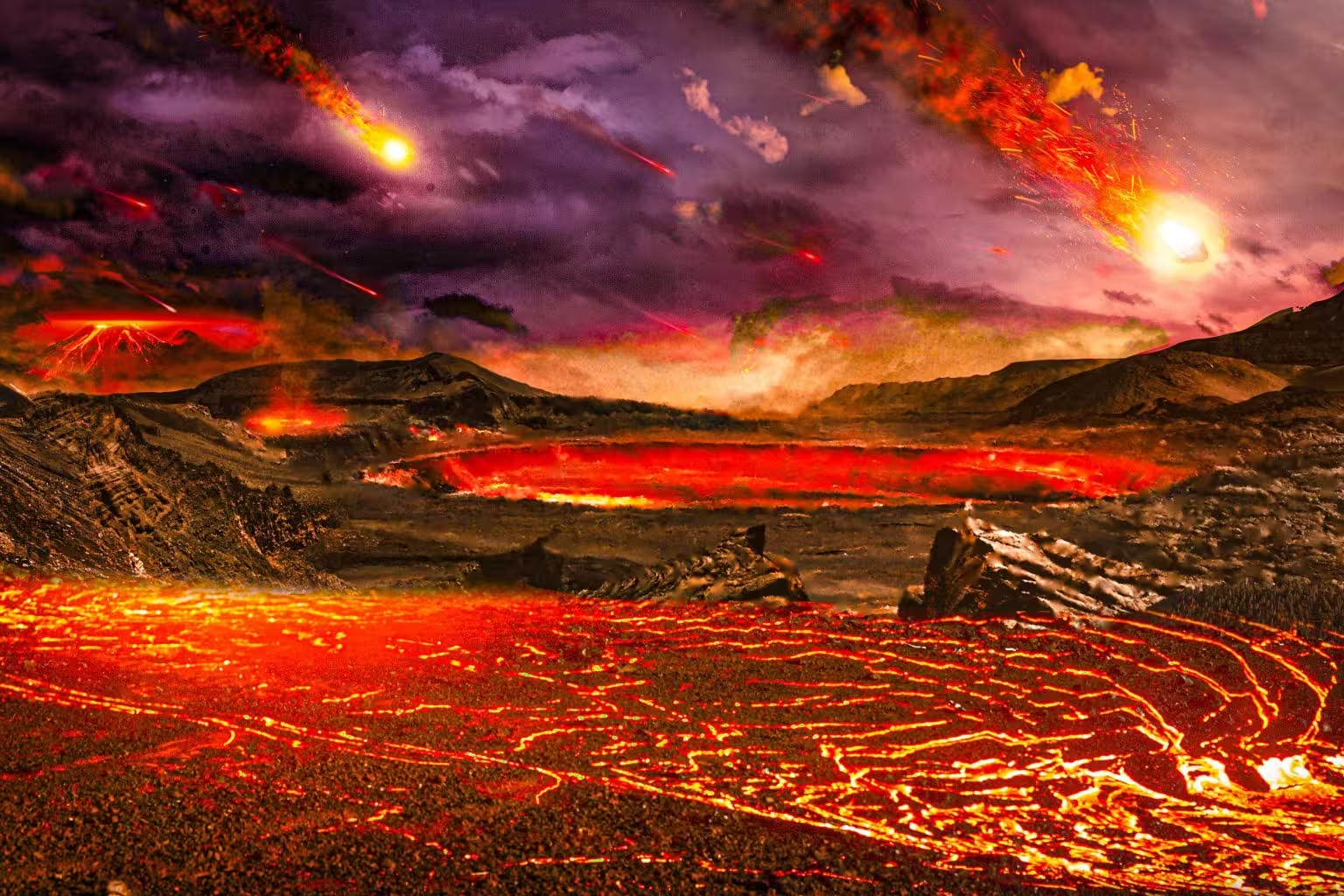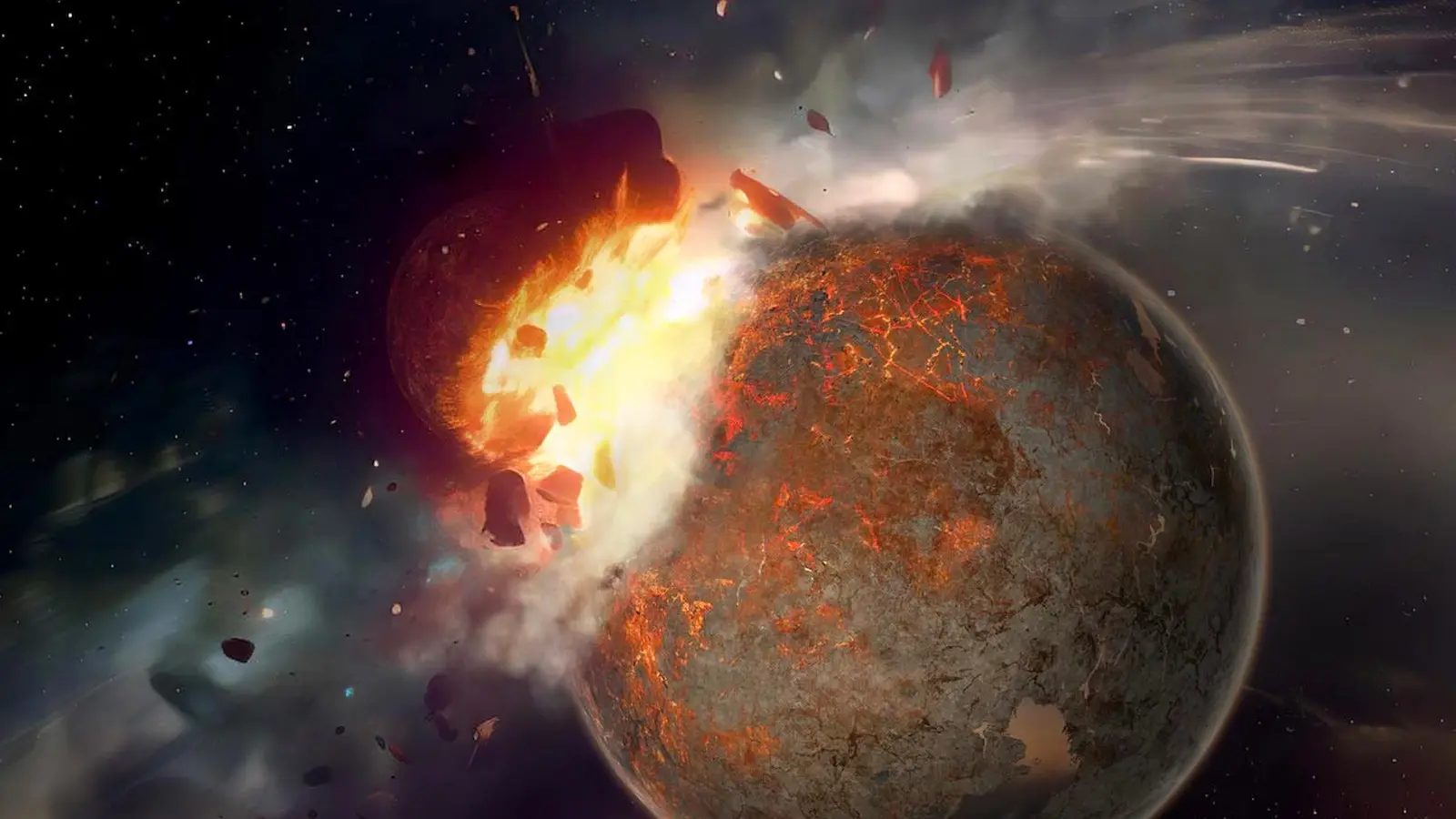9 Minutes
Deep inside some of the planet’s oldest stones, researchers have found chemical fingerprints that may belong to a version of Earth predating the colossal collision that shaped the world we live on. The discovery hinges on a subtle imbalance in potassium isotopes and suggests that fragments of the original proto-Earth survived a planetary cataclysm 4.5 billion years ago.
Ancient fingerprints: potassium isotopes unlock a lost Earth
Modern models of terrestrial planet formation propose that early Earth assembled from smaller planetary embryos and meteorites inside the young solar system’s chaotic disk. Within the first 100 million years, a Mars-sized body—commonly referred to as Theia—collided with proto-Earth in a violent event known as the giant impact. That collision melted and mixed Earth’s outer layers, producing the Moon and largely erasing the distinct chemical signatures of the planet’s formative ingredients.
For decades scientists assumed that the giant impact effectively reset Earth’s chemistry. But isotopes—the subtly different versions of the same element defined by neutron number—provide a way to peer past catastrophic mixing. Potassium, a common element in planetary rocks, exists as three naturally occurring isotopes (39, 40 and 41). Small variations in the ratios of these isotopes act like forensic traces: they record the history of the materials that coalesced to make planets.
The Massachusetts Institute of Technology (MIT) research team searched for a potassium isotopic anomaly that could point to material older than the post-impact Earth. Finding such a signal would mean that pieces of the proto-Earth somehow survived the maelstrom and were later preserved in deep crustal or mantle reservoirs.
What the MIT team did: sampling, separation and mass spectrometry
To chase this hypothesis, the researchers combined field sampling with laboratory sleuthing and numerical simulations. They examined powdered rock samples from some of Earth’s oldest outcrops in Greenland and Canada—regions that expose fragments of ancient continental crust. They also analyzed volcanic lavas from Hawaii. Although Hawaiian volcanics are young on a human scale, they carry cargo from deep within the mantle, potentially delivering primordial chemical signatures to the surface.
In the lab, the team dissolved powdered rock in acid to extract potassium and then used high-precision mass spectrometry to measure the relative abundances of potassium-39, -40 and -41. Measuring tiny differences in isotope ratios requires rigorous chemical separation and careful analytical calibration. The work also drew on a broad meteorite dataset: compositions from dozens of meteorite types served both as comparative baselines and as input for impact-mixing simulations.
By cross-checking terrestrial samples against meteorite compositions, the researchers could test whether any Earth rocks preserved an isotopic signature not generated by later geological processing or by known meteoritic building blocks.
Key discovery: a tiny deficit with big implications
The standout finding was a consistent deficit in potassium-40 relative to the more abundant isotopes in certain ancient and deep-derived rocks. Potassium-40 is already a minor fraction of terrestrial potassium, but these samples contained an even smaller share than normally expected. Detecting that tiny deficit is technically challenging, yet the pattern repeated across independent samples—suggesting a real signal rather than analytical noise or local alteration.
Why is this important? If the proto-Earth formed with a lower proportion of potassium-40, then the later giant impact and the steady accretion of meteorites would have tended to raise the average potassium-40 fraction as new material mixed in. Finding rocks with the deficit implies those samples inherited chemistry from a pre-impact reservoir—material that somehow avoided wholesale equilibration when the proto-Earth was reworked.
To evaluate that hypothesis, the team ran mixing simulations that modeled the giant impact, subsequent meteorite bombardment, mantle heating and convective stirring over planetary history. Using compositional data from known meteorite classes, they showed that impact mixing and later additions should drive Earth’s bulk potassium isotopic composition toward the values seen in modern materials. The anomalous samples, by contrast, preserved the lower potassium-40 signature expected for unprocessed proto-Earth material.

“This is maybe the first direct evidence that we’ve preserved the proto Earth materials,” says Nicole Nie. An artist’s illustration shows a rocky proto Earth bubbling with lava. Credit: MIT News; iStock
The missing meteorite match: a gap in our collection
A surprising twist is that the potassium-40 deficit observed in these Earth samples does not exactly match any meteorite known to science. In prior work, Nie and colleagues had shown that different meteorite groups carry distinct potassium isotopic fingerprints, which made potassium a promising tracer for planetary building blocks. But the specific signature found in Greenland, Canada and Hawaiian samples doesn’t line up perfectly with existing meteorite classes.
That mismatch suggests two possibilities. First, the proto-Earth might have been assembled from a population of planetesimals that are poorly represented—or entirely absent—in our meteorite collections. Our meteorite inventory is biased by what falls to Earth and survives atmospheric entry; many early solar system materials may never have been sampled. Second, the proto-Earth reservoir preserved in the mantle or deep crust could reflect early processes—volatile loss, partial melting, or differentiation—that altered potassium isotopes in ways not replicated by known meteorites.
Either way, the finding highlights an important gap in our understanding of solar system materials and stresses that meteorite samples in hand are not a complete catalog of the planet-forming inventory.
Why this discovery matters for planet formation and geochemistry
At first glance, a small isotopic imbalance might seem esoteric. In reality, isotope tracers like potassium-40 unlock narratives about the timing, sources and processes that shaped planets. If fragments of the proto-Earth remain intact in Earth’s deep reservoirs, they provide a rare, direct look at the solids that originally built our planet—material that predates the Moon-forming event.
These insights refine models of the giant impact: they constrain how thoroughly the collision homogenized the proto-Earth and how some solid fragments could have survived or re-accreted. They also affect inventories of heat-producing elements—potassium-40 contributes to radiogenic heating—which in turn influence early mantle convection, crust formation and the thermal evolution necessary for habitability.
Beyond Earth, the research informs comparative planetology. Understanding which building blocks remain preserved inside a planet can guide interpretations of isotopic data from Mars, the Moon, and meteorite-bearing asteroids. The results also motivate searches for new meteorite types and push for improved sampling of deep-mantle materials via advanced geophysical methods or future drilling campaigns.
Future directions: what scientists will do next
The path forward has several clear avenues. First, expanding isotopic surveys—across more ancient terranes, deeper mantle-derived lavas, and broader meteorite classes—will test how widespread the potassium anomaly is. Second, higher-fidelity simulations coupling impact dynamics with isotopic fractionation can refine how signatures survive or dilute during giant collisions. Finally, coordinated studies of other isotope systems (e.g., calcium, titanium, tungsten) will check whether multiple independent tracers point to the same proto-Earth reservoir.
Practical advances in sample analysis also matter: next-generation mass spectrometers with greater sensitivity and precision will allow researchers to detect even smaller isotopic deviations and to analyze inclusions or mineral phases that better preserve primordial chemistry.
Expert Insight
Dr. Emma Kwan, a planetary geochemist at a major research university (not involved in the study), comments: "Finding a pre-impact chemical signature inside Earth is like discovering a fossilized fragment of our planet’s infancy. The potassium-40 deficit may be subtle, but it acts as a robust tracer because it’s difficult to produce that specific pattern through common geological processes. If confirmed by additional samples and isotopic systems, this result would force us to rethink how much of Earth’s earliest chemistry truly survived the Moon-forming event."
She adds: "This study also underscores how important it is to combine field geology, high-precision lab work, and realistic dynamical models. Each line of evidence strengthens the case, and together they point toward a tantalizing possibility: that the story of Earth’s formation is preserved in places we’ve only just started to look."
Ultimately, the discovery is both a breakthrough and a tease. It opens the door to recovering fragments of the original planet, but it also reminds us how incomplete our sample set of solar system materials remains. As analytical methods improve and more ancient rocks are studied with isotopic hindsight, researchers will either confirm the proto-Earth signature across other tracers or reveal a more complex picture of early planetary chemistry.
For now, the potassium anomaly found in Greenland, Canada and Hawaiian samples represents a rare archaeological trace: a whisper from a time before the Moon, preserved in stone and deciphered by modern science.
Source: scitechdaily
Comments
Reza
If real, changes the heat budget of early Earth and implies surviving proto material in the mantle. Wild that no meteorite match yet. More data pls
atomwave
Is this even true? Potassium-40 deficit could be altered by metamorphism or weathering right? Looks cool but i'm skeptical, need more cross-checks.
labcore
Wow, a fossil of Earth itself? mind blown. If proto-Earth bits survived that smash, that's huge for models, but how many samples actually show it..?


Leave a Comment